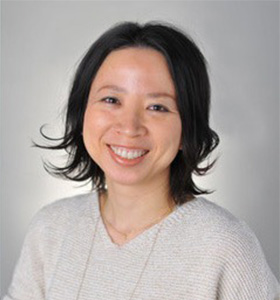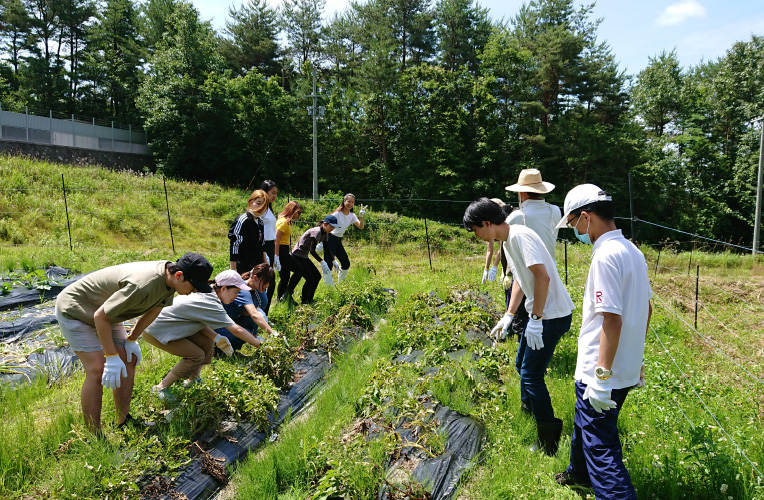Classes
Foundation Course to Policy Science I Subject category : Vision Building Subjects
Kimberley Anne HICKS
Professor/Canada
Profile Online Syllabus
What are the aims of the course?
The subtitle and theme of this course is Culture, Conflict and Cooperation. It aims to broaden students' understanding of the political dimensions of culture as well as examine its relationship to conflict and ultimately envision the possibilities for cooperation. Culture forms our belief systems, frames perceptions, formulates understandings, and guides behaviours and if not understood well may lead to conflict situations including segregation, discrimination, exclusion or much worse. Course participants will learn how to question fundamental assumptions about culture and conflict and how these assumptions may be socially constructed. Examining political theories related to culture including cultural relativism, toleration, multiculturalism, diversity, theories of equality, power relations, and group versus individual rights this course aims to give students the conceptual and analytical tools necessary to become critical thinkers. Our understanding of what is meant by these three concepts, culture, conflict and cooperation, will be examined so that students may interpret real world case studies with a critical understanding. Ultimately, this course aims to enable students to be able to better recognize and challenge preconceptions about the role that culture plays on a personal and political level. Most importantly this course aims to give students opportunities to practice the critical thinking skills necessary to make sense of the intersections of culture and conflict and the ability to envision sustainable cooperation.
What are some of the strategies/ methods you use to get students to reflect on what they are learning?
We live in an information rich era. While information is crucial to developing an understanding of the world around us, it is but one step in the process of developing critical thinking skills. A diverse source of information is important in developing a balanced and informed view of important issues. With a focus on challenging preconceptions, developing critical reflection and building students' autonomous learning skills, this course allows students the time and flexibility to 'test' their preconceived and newfound ideas. Students are given classic, critical and contemporary reading materials to prepare for in class discussions, debates, roleplays, presentations, and other reflective activities. Students write reaction papers to some of the readings, analysing select main points of interest. Class time is a mostly student-centred learning environment in which students have opportunity to engage with each other as well as myself.
Why should a student study Policy Science (on the CRPS major) at Ritsumeikan University?
Studying in a foreign country has the potential to broaden your worldview and also challenges you at the same time on a personal level. Negotiating a new culture brings with it challenges and rewards in ways that are very difficult to achieve in the comforts of your own culture. This cultural experience helps to inform and stimulate students' academic studies as well. The College of Policy Science offers diverse courses in a number of fields including sustainable urban planning, regional development and governance. Students also learn Japanese language skills as well and are able to practice them in an authentic environment. One of the very interesting programs unique to our college is the field research project, which enables second year students to collaborate with each other either abroad or in Japan on a chosen research topic. In this way students get 'hands on experience' as researchers engaging with local communities, business people and government and also learn the skills of developing, administering, analysing and reporting a research project. Students also experience working in a diverse cultural group, developing intercultural competence as well as research skills. These leadership and interpersonal skills, as well as academic skills, prove invaluable for future career choices and pursuits. The college also stresses the importance of intercultural community building in which local and foreign students integrate and communicate in substantive and meaningful ways.
Academic Communication Skills II Subject category : English for Academic Purposes (EAP)
Naoko Kojima
Associate Professor/Japan
Profile Online Syllabus
What are the aims of the course?
This course is to improve academic communication skills (e.g., presentation skills, discussion skills) through group projects. Specifically, the course is designed to help better prepare for participating in in-class discussions in further courses and giving research presentations in the future academic career. Students practice how to use visual aids effectively, express their critical thinking based on research, and collaborate to advance their learning.
What are some of the strategies/ methods you use to get students to reflect on what they are learning?
At the beginning of the course, I give them feedback right after their presentations, so they know exactly what needs to be improved in order to be a good presenter. As the semester moves on, students are asked to do self-evaluation when preparing for their presentations. In addition, they give each other feedback during presentations so that they can learn from each other and take a further step to become an autonomous learner.
Exhibit: Student Works
Vision Building Special LectureⅣ
“Human dimensions of nature conservation”
Subject category : Vision Building Subjects
Ryo Sakurai
Associate Professor/Japan
Profile Online Syllabus
What are the aims of the course?
In this course, students learn about a variety of wildlife issues in Japan and globally, as well as worldwide efforts to achieve humans and wildlife coexistence. Human-wildlife conflicts including agricultural/forestry damage and occasional human casualties occur in rural and urban communities in many parts of the world. The course aims to educate students about (1) human-wildlife conflicts both in Japan and worldwide, including causes and background issues, and (2) key factors and ideas involved in understanding and solving human-wildlife conflicts, including tools and the human dimensions approach. During the first 3 weeks, the course covers topics to ensure students first understand the basics of the relationship between human society and natural resources, including the value of natural resources, types of ecosystem services, and biodiversity. Weeks 4–10 cover topics including wildlife species in Japan and issues facing rural areas (such as depopulation and damage caused by wildlife) and case studies from around the world (such as efforts to utilize wildlife for community development). Weeks 11–15 cover concepts included in human dimensions of wildlife management, such as social science methods used to investigate stakeholders’ perceptions (interviews and surveys) and tools such as workshop facilitation used to build consensus among stakeholders.
What are some of the strategies/ methods you use to get students to reflect on what they are learning?

Figure 1. Role-playing workshop hosted by students
To offer maximum benefit to students, the course includes lectures, guest lectures, and active learning activities such as group discussions, interviews, debates, and workshops where students can learn from their peers. During the debate, students choose one topic (such as “the reintroduction of wolves into Japan”) and take opposing stances. They are given 2 weeks to study the topic and compile evidence to support their arguments, and later on, conduct the debate in the classroom. Students also conduct interview exercises where they prepare questions on a certain topic (such as “whether they felt there was sufficient greenery on campus”) for a week, then interview each other before drafting suggestions to the university based on the results. After learning about the methods and goals behind facilitation and workshops, students play the roles of different stakeholders. Under the workshop theme “Solving human-bear conflicts in a mountain village of Ibaraki city in Osaka Prefecture,” students play one of the fictional roles from a range of stakeholders, including facilitators, farmers (local residents), researchers (ecologists and sociologists), animal rights association staff, hunters, and government officials (Figure 1). After preparing their roles and learning about the overall human-bear conflict situation in Japan for 2 weeks, students host a workshop and are challenged to reach a consensus about how best to solve human-bear conflicts.
Why should a student study Policy Science (on the CRPS major) at Ritsumeikan University?

Figure 2. Students engaging in agricultural work with local residents in the mountain village; field activities conducted as one aspect of the course offered by Associate Professor Sakurai Ryo.
Policy Science is a field that requires learners’ understanding of the background to certain social issues and methods for addressing them. Those who want to contribute to solving social and environmental problems need to be aware of multiple concepts including related law and policies, theories and approaches to decision-making and governance, and specific to this course and in my field, biodiversity conservation issues. Human-wildlife conflicts occur all over the world. This course provides a learning environment where students from diverse countries and cultures can discuss and understand similarities and differences in global human-wildlife conflicts and consider mitigation methods. Students learn how difficult it is to reach consensus even in a hypothetical scenario. By developing their communication skills, they learn how to reach agreement via a participatory process; an essential tool for solving and mitigating social and environmental problems. This is why studying Policy Science at Ritsumeikan University is important for those who are eager to become professionals implementing projects on the ground and contributing to the resolution of actual social and environmental problems. The CRPS program also offers various field trips where students can learn about the actual social and environmental issues people face and engage in collaboration with stakeholders (Figure 2).